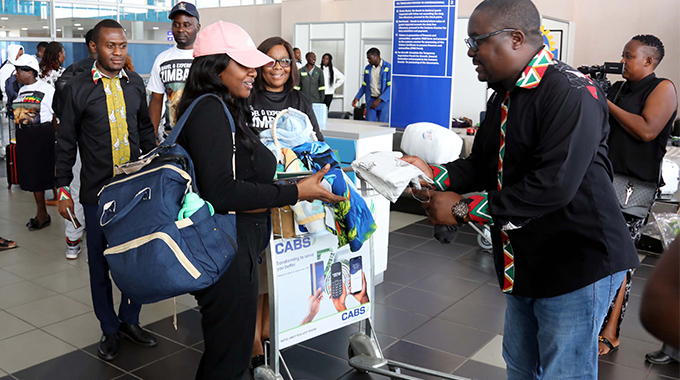Binga community conservancy a game changer
The landmark development of Mucheni Community Conservancy in rural Binga is touted as a real game changer for the local communities that have over the years been browbeaten by cases of human wildlife conflicts.
The rural folk in Binga depend largely on wildlife both for food and source of income.
But the Mucheni Community Conservancy, which dominates the landscape for kilometres around three wards namely — Sinampande, Sinansengwe and Sinakoma — is set to mitigate human wildlife conflict and improve the supply of alternative protein in the form of livestock, fish and non-timber forest products.
It is part of the Kavango-Zambezi Transfrontier Conservation Area (KAZA) that seeks to reconcile the challenges of food security and wild life conservation, through promoting sustainable and legal exploitation of wildlife by local people.
Sustainable Wildlife Management (SWM) programme KAZA site coordinator Mr Patrice Grimaud said the broader community conservancy concept was being implemented in more than 10 countries, including Zimbabwe, Zambia and Namibia.
“In Zimbabwe, we are trying to promote the concept of community conservancies and work together with local people in biodiversity conservation and improvement of livelihoods of communities,” he said during a media tour of the project last week.
“It is important to involve communities in the management of their natural resources and wildlife. Right now, it is a good thing for communities to be capacitated for good governance.
“We want to follow the model of Namibia where we have 40 conservancies directly managed by the communities.”
The community conservancy approach was motivated by a desire to stem poaching and unsustainable exploitation of natural resources through conservation of wildlife and habitats in partnership with the communities living on those lands.
These community managed conservancies provide locals with real and sustainable benefits from wildlife and wilderness areas.
This was the founding principle of the Mucheni Community Conservancy.
Mr Elmon Mdenda, the councillor for Ward 4, applauded the intervention by SWM to support the community project which has buy-in of the local people.
He said the community conservancy would go a long way in controlling human wildlife conflict and give impetus to the communities to take lead in the conservation of natural resources in their communities.
“With this project, you can now feel empowered to have ownership of your natural resources and realise economic benefits out of it,” said Cllr Mdenda.
“The project will also help reduce poaching in the area once the people have other sources of income and food security, such as enhanced livestock breeding, fisheries, and bee-keeping.”
For a long time, the protection of critical wildlife habitats, national parks, reserves, and other protected areas had been a preserve for state parks authorities and other private players with little involvement of local communities.
And, in recent years, protected areas have been found to lack the funding necessary to protect wildlife species and ecosystems.
In addition, parks across the continent are isolated and do not encompass the vast wildlife range lands that are essential for protecting wildlife species in and out of park boundaries and in doing so, find themselves in conflict with human uses of land, water, and other resources.
Community conservancies and other privately-owned lands provide unique benefits and safeguards not only to wildlife but also to the land and ecosystems.
Wildlife experts say community ownership of and access to natural resources is key for sustainable natural resource management and by extension, wildlife conservation.
Not only does the creation of conservancies buffer the network of protected areas by giving wildlife safe space as they roam outside of park boundaries, but it also provides a wildlife-focused development ption that enables communities to adapt to the socioeconomic impacts of climate change.
A villager in Mucheni village Mr Philip Mwindi welcomed the SWM programme which he described as a blessing to the community given a number of intervention measures that seeks to ensure sustainable use of natural resources in the area and reduce human wildlife conflict.
“Once the animals are all put in the community conservancies this will give us peace in the community as our livestock is protected from predatory animals,” said Mr Mwindi, who has lost a number of cattle and goats to lions and marauding baboons that have claimed more than 65 goats since the beginning of the year.
Chief Sinansengwe — Mr Timothy Mdenda, said his tour of Kenya was an eye-opener on sustainable wildlife use in communities hence adopted the concept which as traditional leaders sold the idea to the people.
“We are happy with SWM for supporting the project and we are looking forward to getting there,” he said. “Once the communities have power to control their resources they will act responsible because they will be getting economic benefits from their resources.”
Chief Sinansengwe warned people against celebrating the project yet, saying it was still at an infant stage though showing signs of great hope.
“Alone we cannot go far,” he said. “We need all the stakeholders to make their contribution for us to get there.
“We need our communities to be adequately capacitated.”
The SWM project is an Organisation of African, Caribbean, and Pacific States (OACP) initiative, funded by the European Union.
It is being implemented by a dynamic consortium of partners that includes the French Agricultural Research Centre for International Development (CIRAD), the Centre for International Forestry Research (CIFOR), Food and Agriculture Organization of the United Nations (FAO), and the Wildlife Conservation Society (WCS).
In Zimbabwe, the activities are being carried out by CIRAD with the support of the government through the Ministry of Environment, Climate, Tourism, and Hospitality Industry.
The project followed an integrated approach by considering community conservancies as socio- ecosystems linked to protected areas with strong human interactions as an integral part.
Project activities are implemented in partnership with the communities who have a better understanding of their natural resources.
Human — induced climate change is causing widespread disruption in nature and affecting the lives of millions of people in Africa and around the world, despite efforts to reduce the risks.
People in Africa and ecosystems least able to cope are being hardest hit.As smallholder farmers grapple with failing livestock and crop farming due to shifting weather patterns, community conservancies are part of an alternative land-use model that can reduce rural poverty and generate alternative revenue streams.
With adequate support from national legislation and rights over wildlife ownership, communal people can develop enterprises on the land they have set aside for protection based on a benefit-sharing model.
They can benefit from tourism-based ventures like eco-lodges, conservancy entrance fees, bed night charges and other services in the form of revenues, jobs and economic empowerment.
Conservancies deliver even more, by providing equitable and inclusive governance over resources so that the ecological systems underpinning human well-being remain healthy.-The Herald











